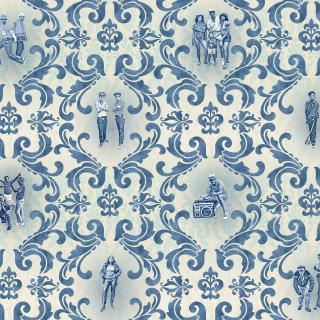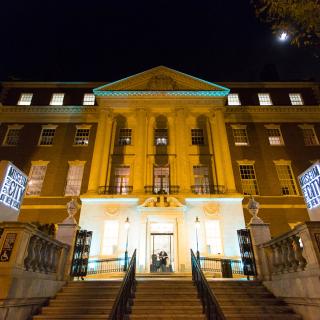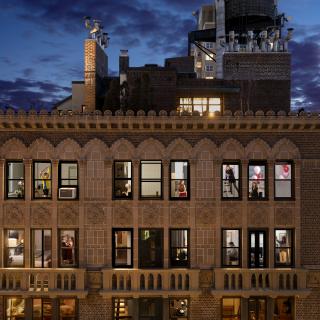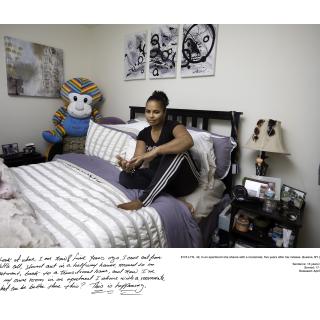New York Now: Home Is Chosen
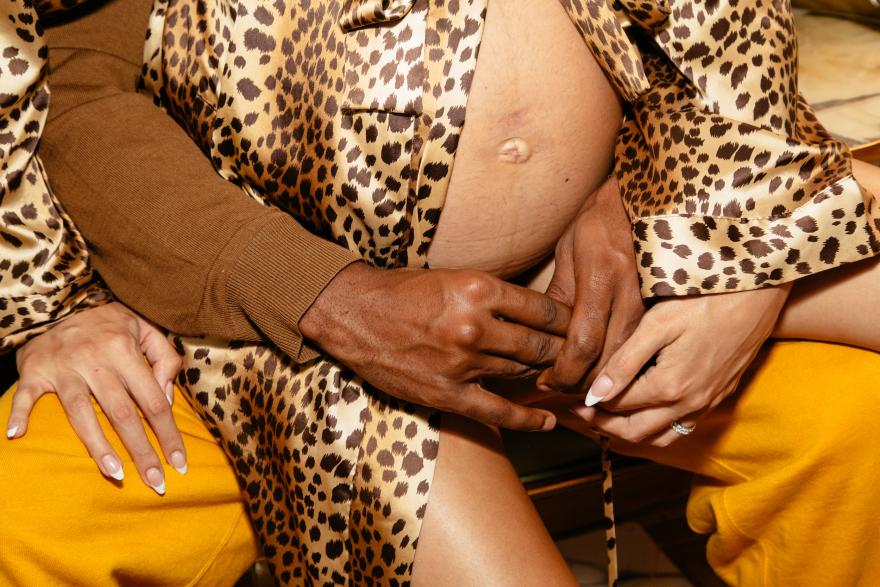
HOME IS CHOSEN
The American family has long been pictured as the nuclear family: husband, wife, children, and pet, living in a single-family home with a picket fence. This social imaginary was constructed through government policies regulating marriage rights, immigration restrictions, and property rights. It was also reinforced by photographic and media representations. Yet our actual lives are much more expansive than this limited vision of families and homes! The work in this exhibition celebrates the many shapes and forms that New York families take—from boisterous gatherings of extended kin to the companionship that pets uniquely provide.
Family, importantly, is not only defined by blood or birth, but can be made and remade through forms of kinship that span generations, geographies, and other orientations. LGBTQ+ folks, perhaps most of all, have modeled the importance of chosen families that love and care for one another when birth families, religious and cultural spaces, and state institutions have not. Historically, for example, Street Transvestite Action Revolutionaries (STAR), founded by Sylvia Rivera and Marsha P. Johnson in 1970, opened the STAR House in the Lower East Side; it was the first LGBTQ+ youth shelter in the United States. The ballroom scene remains a safe space for Black and Latinx queer and trans New Yorkers, who make chosen family in the houses and in balls.
In sharing photographs of chosen family, artists such as Naima Green, Richard Renaldi, and Laila Annmarie Stevens offer intimate glimpses into the nourishing relationships and spaces that sustain queer life in New York today.
NAIMA GREEN
1. Untitled (Self-Portraits), 2017–2019
POLAROID PRINTS
2. Cynthia & Travis, 2019
ARCHIVAL PIGMENT PRINT
Naima Green is a multidisciplinary artist, photographer, and educator from New York with an abiding investment in documenting intimacy in Black, Brown and queer communities. To make her images, Green co-creates environments that are safe and playful—an act of queer world-building that exceeds the moment of taking the picture.
New York Now includes three bodies of work that archive intimacy and pleasure amongst couples, individuals and chosen family. Untitled (Self-Portraits) provide glimpses of Green’s body and her daily labors reflected in the mirror of her Brooklyn home. Cynthia & Travis shows more than the sum of its tangled-up body parts, with signs of new life punctuating the middle of the frame. Pur·suit (on the adjacent wall) is a full suite of playing cards featuring images of Green’s chosen kin, a portrait of a community that comes together and falls apart like different hands drawn from the deck.
Collectively, these projects reveal the tenderness of queer life, and the many forms of love necessary to build and sustain communities and homes.
RICHARD RENALDI
1. 01:17
2. 06:11
3. 09:15
4. 01:27
From the series “Manhattan Sundays,” 2010–2016
ARCHIVAL PIGMENT PRINTS
COURTESY OF BENRUBI GALLERY AND RICHARD RENALDI
Between 2010 and 2016, Richard Renaldi ventured out in the wee hours of Sunday mornings to make photographs; in this liminal space between light and dark, he encountered those who made the nightclub their safe haven. Shot largely in downtown LGBTQ+ nightclubs and the streets just outside them, “Manhattan Sundays” features people across racial, class, and sexual lines in their post-dancing ecstasy who were willing to pose for one more moment. Couples, triples, and singles populate Renaldi’s photographs, which gesture towards the connections enabled through the club.
What does nightlife have to do with making home and family? The late Queer Studies scholar, José Esteban Muñoz, called the nightclub a utopian site that “serves as a conduit for knowing and feeling other people.” For queer and trans folks—many of whom are survivors of the ongoing AIDS crisis and other forms of harm—the ballroom, the dancehall, and the stage are more affirming spaces than their homes of origin. “Manhattan Sundays” beautifully shows how, through participating in the club scene, LGBTQ+ folks can form kinships that make life in the “outside world” survivable.
LAILA ANNMARIE STEVENS
1. Nikki and Ceara, Astoria, Queens, NY, 2020
2. Jada and Aaliyah, Crown Heights, Brooklyn, NY, 2022
3. Rizzo, Long Island City, Queens, NY, 2022
From the series “A House Is Not Home”
ARCHIVAL PIGMENT PRINTS
Black queer photographer and visual artist Laila Annmarie Stevens believes image-making can help envision new worlds of inclusion and power, especially for the minoritarian youth who are their peers. Fittingly, their long-term documentary project, “A House Is Not Home,” collaborates with LGBTQ+ youth in New York to photographically represent their unique and self-fashioned definitions of home. As Stevens says, “A home is not where you are, but the people who allow your freest self to live.”
The portraits in “A House Is Not Home” do not overtly document the many obstacles that young queer and trans people face, which include increased risk of houselessness and incarceration. Rather, the images exude the feelings of strength, peace, and determination carried by each person as they work to create safe spaces that re-envision what family and community can be. Whether living with their sweetheart in their first independent apartment or transforming their childhood bedroom into a comfortable respite, the queer youth in these photographs communicate the difficult labor, and the rewards, of making a house into a home.
NAIMA GREEN
Pur·suit, 2019
OFFSET PRINTED PLAYING CARDS
JOANA TORO
1. Laura Martinez, 2016
2. Laura Martinez, 2018
3. Juni en la Ventana, 2016
4. Juni y Su Mama, 2016
5. Jessica y San Judas Tadeo, 2015
6. Jessica en Su Casa, 2015
From the series “TransLatinas”
CHROMOGENIC DEVELOPMENT PRINTS
Joana Toro is a self-taught Colombian documentarian and visual artist based both in New York City and Bogotá, Colombia. Witnessing the fierceness of Latinx transgender women leaders in the LGBTQ+ and immigrant rights’ movements in New York, Toro began to work with them to create images representing their public lives as activists as well as their intimate private lives. “TransLatinas” is the result of this collaborative process, and is a series that shifts dominant narratives and media representations of trans women’s lives that focus solely on violence and pain.
In these portraits, mostly taken within their homes, the women style themselves as they truly want to be seen—as mermaids, daughters, wives, and fabulous femmes. The resulting images are at turns dreamy, fantastic, joyful, and introspective. “TransLatinas” is a celebration of self-representation, an agency that every person deserves.
Image Credit: Naima Green, Cynthia & Travis, 2019. Courtesy of the artist.

